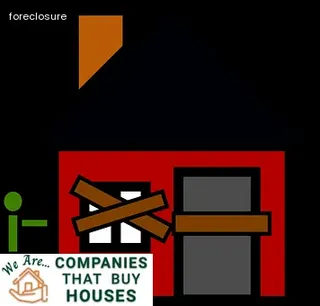Navigating the Alaska foreclosure timeline can be a difficult process for homeowners. Foreclosure is a legal process in which a lender attempts to recover the balance of a loan from a borrower who has defaulted on payments.
In Alaska, state law outlines specific timelines and procedures that lenders must follow before they can foreclose on a property. It is important for homeowners to understand their rights and the steps involved in this process so that they can take action if needed.
Foreclosure can have serious financial consequences, so it is crucial for homeowners to understand the timeline and be aware of deadlines throughout the process. Homeowners need to know their rights when it comes to foreclosure, what paperwork must be filed, when notices are sent out, and how long each step takes.
Knowing these details will allow them to prepare in advance and potentially avoid foreclosure altogether.

Missing a payment when facing foreclosure in Alaska can have serious consequences. It is important to understand the timeline and potential risks associated with not making payments.
The first step is to become familiar with the typical timeline for foreclosures in Alaska, which can vary depending on the lender or mortgage servicing company involved. Generally, if a payment is missed, a notice of default will be sent out within 30 days, followed by a 90-day pre-foreclosure period during which time owners can attempt to work out an agreement with their lender.
If no agreement is reached, the lender can file for foreclosure and proceed to auction off the property. During this process, homeowners may also be responsible for legal fees and other costs associated with foreclosure proceedings.
At any point during the process, homeowners need to be aware that they could lose their home if they do not make payments or reach an agreement with their lender. It is essential for anyone facing foreclosure in Alaska to educate themselves on their rights and responsibilities as well as the entire foreclosure process so they are aware of what to expect and how best to navigate it.
A breach letter is an official notification sent by a lender to a borrower who has defaulted on their loan. It outlines the reasons for the default, the amount of money owed, and the actions that must be taken in order to remedy the situation.
Breach letters are usually sent out when all other attempts at communication have failed or if there is an immediate threat of foreclosure. The letter will also inform the borrower of their rights during this period, such as having time to investigate any discrepancies or filing for bankruptcy protection.
This letter is typically followed by a notice of sale which puts homeowners on a timeline set by state laws to take action if they wish to avoid foreclosure proceedings. Understanding what a breach letter is and how it fits into the foreclosure timeline can be vital for homeowners facing financial hardship in Alaska.

Foreclosure in Alaska is a lengthy process that can take anywhere from 6 to 24 months. It begins when the homeowner fails to make their mortgage payments and the lender files for foreclosure with the court.
The homeowner is served with a notice of default, giving them 30 days to pay off their debt or enter into an agreement with the lender. If no payment or agreement is reached, the court will issue a judgment of foreclosure.
This allows the lender to take possession of the home and sell it at auction. The proceeds from this sale are used to pay off any remaining debt owed by the homeowner.
Afterward, the homeowner has 15 days to contest the foreclosure in court, after which time title transfers to the new owner. As you can see, navigating Alaska’s foreclosure timeline involves plenty of paperwork and deadlines that must be met if homeowners want to keep their homes.
Navigating a foreclosure in Alaska can be tricky, as the state has its own unique laws that must be followed. Homeowners should be aware of their rights throughout the process and understand what each step entails.
From the pre-foreclosure period to the actual sale of the property, it is important for homeowners to educate themselves about their legal options when facing foreclosure. The first step is understanding the timeline and how long each stage may take—Alaska allows lenders up to 180 days after missing a payment before they can file a Notice of Default.
After filing, lenders must wait another 40 days before they can file a Notice of Sale, which is when an auction will take place. Although some homeowners may opt to go through mediation with their lender during this time, it’s important to note that if none of these agreements are met, then foreclosure will proceed as scheduled.
Once a property has been sold at auction, any remaining balance owed on the mortgage is still due, so understanding what happens afterward is essential in navigating the Alaska foreclosure timeline.

When facing foreclosure in Alaska, it is important to understand your right to reinstate before a sale. Homeowners have the legal right to pay off the amount owed to the lender plus any associated fees and costs any time before the foreclosure sale.
This process is known as reinstating the loan, and allows homeowners to save their home from foreclosure. In order for reinstatement to be successful, the homeowner must pay all of the past due payments, late fees, and other applicable costs within a certain timeframe outlined by state law.
It’s important for homeowners in this situation to be aware of their options and rights when it comes to reinstating before a sale so they can make an informed decision about their finances. Working with an experienced real estate attorney or financial advisor can ensure that you are taking advantage of all available options while navigating through this difficult process.
Navigating the Alaska foreclosure timeline involves understanding the redemption period after foreclosure. Depending on whether a homeowner chooses to exercise their right to redeem, or if they are unable to do so, the timeline can vary significantly.
First, if a homeowner exercises their right to redeem, the redemption period lasts for six months from the date of sale and allows the homeowner to get current on past due payments and costs. If not redeemed during that time frame, then the home is officially transferred and title is given to the buyer.
On the other hand, if a homeowner is unable to make these payments within this timeframe then they will no longer have legal ownership of their property. It is important for homeowners to know that even after title has been transferred and redemption rights have expired, there may be options available in Alaska such as filing a motion for relief from forfeiture.
Moreover, it's critical for homeowners in Alaska who are facing foreclosure to seek legal counsel immediately as certain deadlines set forth by law must be met in order to maintain their rights throughout this process.

When navigating Alaska's foreclosure timeline, eviction after nonjudicial foreclosure is a possible outcome. Homeowners should be aware of the implications that come with a nonjudicial foreclosure, as this type of foreclosure can lead to an immediate eviction without any sort of judicial review.
If the lender has completed all of the steps necessary to foreclose according to Alaska law, the homeowner can be evicted within days of being notified about the foreclosure sale. Furthermore, homeowners must be aware that they will still be responsible for any outstanding debt remaining after the property is sold at foreclosure auction.
It is important to understand that in most cases, lenders have no obligation to accept less than what is owed on the loan and if this occurs, it can leave homeowners facing significant financial burdens.
Navigating the Alaska foreclosure timeline can be a difficult and intimidating process for homeowners. Seeking assistance from an experienced and knowledgeable Alaska foreclosure lawyer may be the best choice for those facing foreclosure.
A foreclosure lawyer in Alaska will have expertise in the state laws, statutes, and procedures that govern foreclosures. In addition, they can help to analyze all available options to protect a homeowner’s rights while navigating the timeline of a foreclosure.
They are able to provide legal advice on the best course of action to take and represent clients during negotiations with creditors or lenders. An Alaska foreclosure attorney will also be able to assist in filing documents and provide representation during court proceedings if necessary.
Homeowners need to know that they have legal options available when facing foreclosure, and seeking assistance from an Alaskan foreclosure attorney is one way to ensure protection of their rights throughout the process.

When it comes to the foreclosure timeline, homeowners in Alaska need to have a good understanding of when and how foreclosure can start. In Alaska, mortgage lenders can foreclose on properties without first obtaining a court order.
This is known as non-judicial foreclosure and is used most often in this state. Before the foreclosure process begins, mortgage lenders are required to provide written notice of default to affected homeowners.
This notice must include details about the full amount owed, what actions must be taken by the homeowner to cure the default, and the date when payment must be made by. If the homeowner does not take action within that time period, then their property will go into foreclosure and may ultimately be sold at auction.
It's important for homeowners in Alaska to know exactly when this process begins so they can act quickly if they want to avoid losing their home.
Familiarizing yourself with the foreclosure process in Alaska is essential for any homeowner to understand. Knowing what to expect can help you make informed decisions and take proper steps to protect your rights.
The timeline of a foreclosure typically starts when a lender files a Notice of Default with the court, which signals that a borrower has missed multiple payments and has defaulted on their loan. After this, the homeowner will receive an Order for Sale from the court which requires them to attend a sale hearing where they can contest the foreclosure.
If no action is taken at this point, the lender will then file a Notice of Trustee’s Sale with the court. This document allows lenders to repossess mortgaged properties if no resolution is reached within 90 days of filing.
Homeowners in Alaska have additional legislation that offers added protection against potential foreclosure abuses by providing additional time for homeowners to pay off their debt or find alternative solutions such as loan modifications or short sales. Understanding these steps can help ensure you are aware of your rights and how to navigate through each step of the process successfully.

When it comes to navigating the Alaska foreclosure timeline, understanding nonjudicial procedures is key. Nonjudicial foreclosure involves the sale of a property to satisfy the amount owed under a debt or contract.
In Alaska, lenders can initiate a nonjudicial foreclosure process upon default of an agreement if they have obtained an order from the court allowing them to do so. A lender must submit an affidavit in order to receive this order and must provide written notification of their intent to foreclose on the borrower's property.
The borrower then has 30 days in which they can respond before legal proceedings begin. It's important for borrowers to be aware that failure to comply with any notices sent by the lender may result in forfeiture of their right to redeem the property or make any payments due on their loan.
To ensure that they are fully informed throughout the entire process, homeowners should seek out experienced legal counsel who are knowledgeable about Alaska's foreclosure laws and regulations prior to making any decisions.
Navigating the Alaska foreclosure timeline can be a daunting task for homeowners, but fortunately there are resources to help with your case. These include local housing organizations and legal aid services, which provide free guidance and assistance for those facing financial hardship.
Non-profit consumer protection agencies may also be of help in understanding the complexities of the foreclosure process. Additionally, counseling services can provide homeowners with budgeting advice to better manage finances and judiciously avoid any potential missteps in the future.
Finally, online resources such as government websites and forums can provide valuable information on foreclosure timelines and procedures.

Navigating a foreclosure timeline can be a daunting and confusing process for homeowners in Alaska. One of the best ways to navigate this difficult situation is to speak with an experienced attorney for legal advice.
An attorney can answer questions about the foreclosure timeline and what the homeowner's rights are under local, state and federal laws. Additionally, an attorney can provide counsel on any paperwork that needs to be filed or deadlines that must be met during the foreclosure process.
In some cases, an attorney may also suggest alternatives to foreclosure such as a loan modification or short sale. Homeowners facing a potential foreclosure should consult with an experienced attorney as soon as possible to review their options and get the best advice for their particular situation.
Foreclosures in Alaska can take anywhere from 9 to 12 months, depending on the individual case. The timeline of a foreclosure in the state begins with a lender filing a complaint and ends with either repossession or sale of the property.
During this time, homeowners have certain rights and must follow specific steps in order to keep their home or claim any remaining equity after repossession. Homeowners should know that they will be notified of the foreclosure process as it progresses, as well as their legal options throughout the duration.
It is important to understand that lenders are required to wait at least 30 days before initiating foreclosure proceedings, giving homeowners some extra time to explore alternatives such as mortgage assistance programs. Before the sale of a home is finalized, lenders must provide at least 3 weeks’ notice for homeowners to respond and potentially challenge any inaccuracies or disputes regarding mortgage payments or amount owed.
Additionally, it is important to note that all proceeds from the sale go first towards paying off debt owed on the property; any remaining money goes back to the homeowner if there is equity left over from the sale. With an understanding of these timelines and procedures, homeowners can navigate Alaska's foreclosure process more confidently.

Navigating the Alaska foreclosure timeline can be a daunting task for homeowners, especially those who are facing potential foreclosure. In order to avoid or mitigate foreclosures, it is important to understand the process and take proactive steps early on.
Homeowners should develop an understanding of their financial situation and fully explore all available options before taking action. This includes considering loan modification, short sales, refinancing, or selling the property.
Before signing any agreements related to foreclosure avoidance, homeowners should consult with a qualified attorney and carefully review all documents. It is also important to stay organized by keeping records of all conversations with lenders, including dates and details discussed.
Additionally, homeowners should remain up-to-date on any changes in state or federal laws that may affect them. Finally, do not ignore the issue; taking prompt action can often help limit financial losses associated with foreclosure.
When it comes to navigating the Alaska foreclosure timeline, homeowners should be aware that they have alternatives to foreclosure. One of these alternatives is loan modification, which can result in a lower interest rate, longer repayment time frames or a reduction of the overall loan balance.
Another option is forbearance, which suspends or reduces mortgage payments for a specified period of time and allows homeowners to catch up on missed payments later. Homeowners may also choose to pursue a short sale or deed-in-lieu of foreclosure as an alternative to foreclosure.
A short sale is when the lender agrees to accept less than the amount owed on the mortgage and allows the homeowner to sell their property for less than its appraised value. With a deed-in-lieu of foreclosure, the homeowner relinquishes ownership of their home back to the lender in exchange for having their debt forgiven.
It's important for homeowners considering their options during the Alaska foreclosure timeline to seek legal advice early on and understand all available alternatives before making any decisions.

When a homeowner defaults on their mortgage, the bank or other financial institution that holds the loan begins the foreclosure process. The timeline for this process varies by state, but in Alaska homeowners should be aware that it can take up to three years before their property is foreclosed upon and they are evicted.
During this time, lenders must follow certain steps dictated by Alaska law in order to complete the foreclosure. This includes sending written notice of default, filing a complaint with court, and providing notice of sale to all parties involved.
Additionally, lenders must provide an opportunity for borrowers to cure their default before foreclosing on the property. Homeowners should also be aware of different types of foreclosure proceedings available in Alaska such as judicial and nonjudicial foreclosure proceedings.
Knowing how each type works can help homeowners understand what options are available to them during the foreclosure timeline and allow them to make informed decisions about their situation. It is important for homeowners facing potential foreclosure in Alaska to understand these processes and timelines so they can plan accordingly and make informed decisions about their financial future.
In Alaska, foreclosures work similarly to other states in the US. The foreclosure process begins when a homeowner fails to make their mortgage payments.
Once this happens, the lender will file a notice of default with the Alaska court system, alerting the homeowner that their loan is in default and they must take action within a certain amount of time to avoid foreclosure. After this notice is filed, homeowners have two options: they can either bring their loan current by paying all past due amounts or enter into a foreclosure avoidance plan with their lender.
If neither option is taken, then the lender may proceed with filing a complaint for foreclosure with the court. From there, the court will issue an order requiring that a public auction be held in order to sell off the property and recoup any losses incurred by the lender.
It's important for Alaskan homeowners to understand the timeline of this process so they can act quickly if they are facing potential foreclosure. With proper knowledge of how foreclosures work in Alaska, homeowners can take necessary steps to avoid losing their home and protect their financial future.

When navigating the Alaska foreclosure timeline, it is important for homeowners to know how many months they can be behind on payments before going into foreclosure. According to the Alaska Statutes Title 34, Chapter 10, Section 470-480, lenders must wait at least three months of missed payments before beginning the foreclosure process.
After those three months have passed, the lender will send a Notice of Default and Right to Cure letter that outlines the homeowner's options. Homeowners must either pay off their debt or enter into an agreement with their lender within 30 days of receiving this letter in order to avoid going into foreclosure.
If no action is taken by the end of this period, then the lender can start foreclosure proceedings. Knowing how many missed payments are necessary before going into foreclosure is essential for Alaska homeowners as it allows them to take proactive steps in order to keep their home from being foreclosed upon.
Alaska has the longest foreclosure timeline in the United States. With an average of 745 days, it is almost double the national average of 400 days.
Homeowners facing foreclosure in Alaska need to be aware of this extended timeline and what steps they should take to navigate it successfully. The state's unique geography and remote location can make navigating the foreclosure process difficult for homeowners.
It is essential that homeowners understand their rights, the timeline and any legal recourse available to them when facing foreclosure. Consulting with a qualified attorney can help provide clarity and answer any questions about navigating the Alaska foreclosure timeline.
The non-judicial process of foreclosure in Alaska is an expedited option for lenders to repossess a borrower's property when mortgage payments are not made. In this process, the lender initiates the foreclosure proceedings without having to go through the court system.
The first step in the process is the issuance of a Notice of Default, which is sent to the borrower by registered or certified mail. The notice will provide details regarding the default and outline what steps can be taken to remedy it.
Once the Notice of Default has been issued, lenders must wait at least 90 days before proceeding with any further action. During this period, lenders may negotiate with borrowers or offer workout plans to help them get back on track with their payments.
If no resolution is reached within 90 days, then the lender can file a Motion for Foreclosure Judgment with the court, which grants them permission to sell the property at public auction and collect any remaining funds owed. This entire process usually takes between 6 and 12 months from start to finish, depending on how quickly and efficiently each step is handled by all parties involved.
A: The length of time it takes to complete a foreclosure in Alaska depends on the type of loan and the lender's specific process, but generally it can take anywhere from 6-12 months.
A: In Alaska, the foreclosure process typically takes anywhere between 6-12 months when a Mortgage Loan is secured by a DEED OF TRUST, TRUST DEED or DEEDS OF TRUST and must be EVIDENCED by a LAWSUIT. This timeline begins when the Notice of Default is MAILED out to the borrower.
A: Foreclosure in Alaska can take up to two years when a forbearance agreement is not reached and deficiency judgments are sought.
A: Non-judicial foreclosures in Alaska typically take between 60 to 90 days after all required notices and documents are filed.
A: In Alaska, the foreclosure process can take up to a year or more when the Right of Redemption is exercised.
A: The foreclosure process in Alaska is relatively quick, usually taking between 3-6 months. However, the length of time can vary depending on the complexity of the case and if any loan modifications are used to resolve the default.
A: The timeline for completing a foreclosure in Alaska when the Mortgage Loan is secured by a Deed of Trust, Trust Deed, or Deeds of Trust can vary depending on the specifics of the case. Generally speaking, however, it can take anywhere from six months to two years for the entire process to be completed. Homeowners will need to consult with an attorney who is knowledgeable about foreclosure laws in Alaska in order to get an accurate timeline for their particular situation.